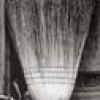
Posted
Here is another orchestral music piece which I created with Synfire. It was inspired by a classical concert which I visited last year around christmas time. They played several contemplative pieces and after listening to them I had the idea that I could try to compose something similar. Here is the result:
"Ein Adagio"
(http://www.box.com/s/454c8561291ed463ab49)
© 2012 by Jürgen Kraus
So., 01.04.2012 - 17:26 Permalink
That's a beautiful tune. I like it.
So., 01.04.2012 - 17:33 Permalink
Nice work Juergen;
Would you care to describe the methods you use? The post last week brought up quite a bit of discussions and opened eyes for those of us less formiliar with how to use SFP.
Having come from the world of pop and rock, I'm finding some difficulty in going over 6 minutes. Too much repetitions and not enough variety. (I might have like to hear some violins do some pitzacatto or faster pacing over the bass of violas (not a criticism). I particularly liked the build down to the end - very effective, that is one technique I learn from you todar.
I'm sure all the users here are coming from different schools of music. I want to learn some classical techniqes to incorporate into pop arrangements.
Keep up the good work, and let's hear more..
So., 01.04.2012 - 19:31 Permalink
About the workflow:
1. The first step is to create some short phrases (say 1 to 4 bars) for all of the orchestral instruments I want to use. They should play nicely together and form a short, full orchestrated arrangement snippet for about 15 seconds. The phrases should be loop-able and contain some kind of a theme or a motive. I call this arrangement snippet the 'germ cell' of the music piece, since the complete piece will be built up mainly just by reproducing and transforming this phrases.
2. Make an accompaniment of the arrangement snippet (Container >> Make accompaniment).
3. Explore chord progressions with the arrangement snippet. The aim of this step is not only to find appropriate chord progressions but also to check the quality of the used phrases. Good phrases should work well with many different chord progressions. Playing around with the chord palettes also should already give a vision of how the complete music piece finally will sound.
4. Once a nice chord progression is found it will be copied to the arrangement. Now you have made one or one and a half minute of music from your original 15 seconds snippet.
5. An orchestral music piece should have at least a duration of about 7 minutes. Of course, this time can not be filled just by playing chord progressions with one and the same phrases. So, now it's the time to introduce some variations of the phrases, like pitch transposing of some symbols or figure segments, duration changes, muting and unmuting, dragging figures from one instrument to another, and so on. It often also gives interesting results, when the looping end points of looped vectors from different instruments are set to different positions. However, I'm usually careful with variations. In my opinion, less is more. The listener should still be able to recognize the motives.
6. Now, from the modified phrase material again an accompaniment will be made and new chord progressions will be explored.
7. And so on. It's an iterative process.
I've created a demonstration video of this workflow:
That's my first try on creating a 'tutorial video', so please excuse the bad quality, especially the bad sound (and of course my bad english ;-) ).
So., 01.04.2012 - 23:43 Permalink
Thank you so much Juergen for your well presented explanation. It was easy to follow and gave excellent results.
I had thought of using such simple phrases and modulating them, I am string too many phrases together , which then becomes impossible to discipher as a repeatable theme.
Away from my studio right now (in Boston for week). When I get back I am gonna try a similar approach as described in your postings.
Thank you more making it so simple, straight ahead and easy to follow..
Mark
Mo., 02.04.2012 - 12:04 Permalink
Too much repetitions and not enough variety. (I might have like to hear some violins do some pitzacatto or faster pacing over the bass of violas (not a criticism).
Thanks Mark, that’s a very useful information. While composing a piece I need to listen to it dozens of times, and over time there is a risk that I lose my sense of what sounds good and what does not. Therefore, it is always good if someone hears the piece with "fresh ears" and tells his first impression.
I know that pieces that are longer than 5 minutes generally need at least two themes or motives (as a rule of thumb). I was already going to compose a completely different middle part with a second motive, but then the piece would probably become more than 10 minutes, what in this case appeared to me too long.
Mo., 02.04.2012 - 23:59 Permalink
I always keep exploring and making variations, with computer you can keep every take. I often find a day, week later the bass is too busy in chorus, not enough guitar fills etc. The good thing with a computer is you go back to the earlier version. I often cut/pase/merge together the final take using parts of the many variations I have done.
Do not critique a song when you are in a bad mood. I often feel like it is total garbage, at the time of doing it however, it was total perfection.
The real test is to play them for someone in the room with you, you will often notice that parts of sections that aren't up to par, just because there is someone else in the room. The best is if you find a person who you trust their sensibilies.
The point is when you've gone to far, you can still back up.
Do., 07.06.2012 - 01:45 Permalink
i miss this one
just watched...
thank you so much juergen
Mi., 25.12.2019 - 09:03 Permalink
Very nice.
So., 02.02.2020 - 20:02 Permalink
This was helpful to me as well. Thanks!
Mo., 31.10.2022 - 21:51 Permalink
The video is no longer available.
Mo., 31.10.2022 - 22:51 Permalink
Sorry. Now it should be available again.




